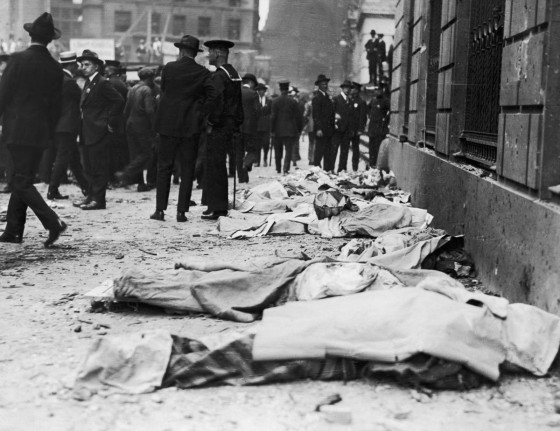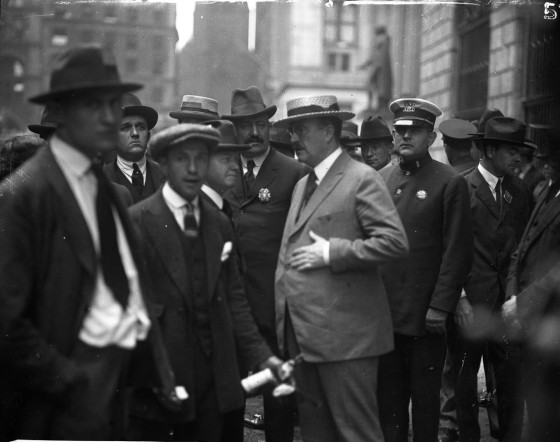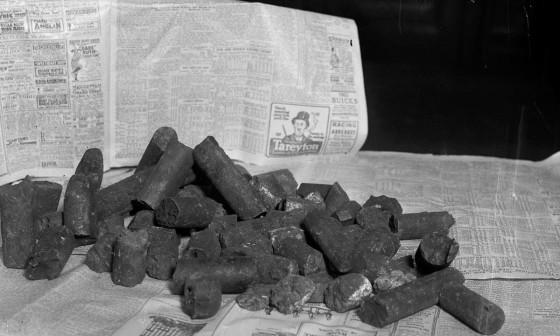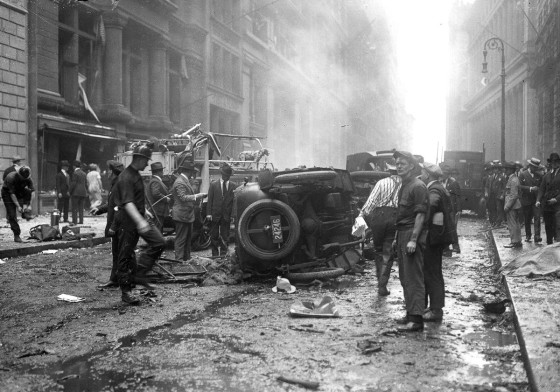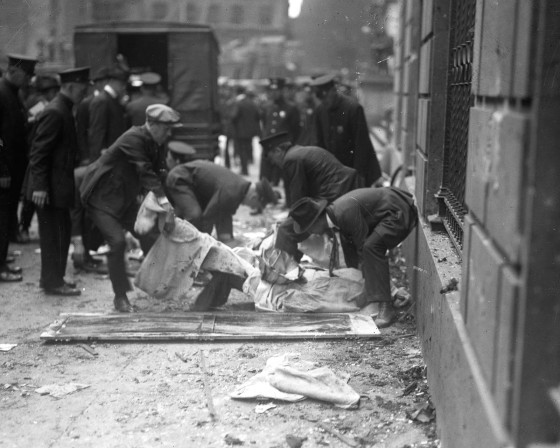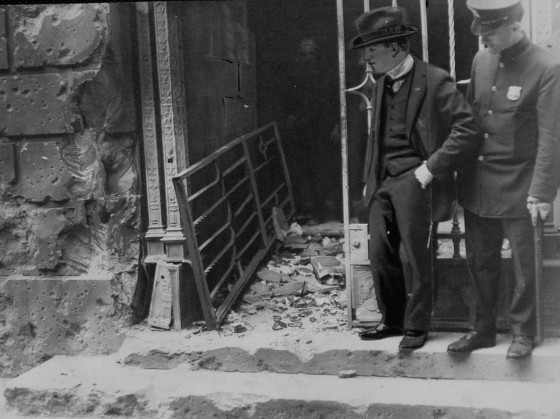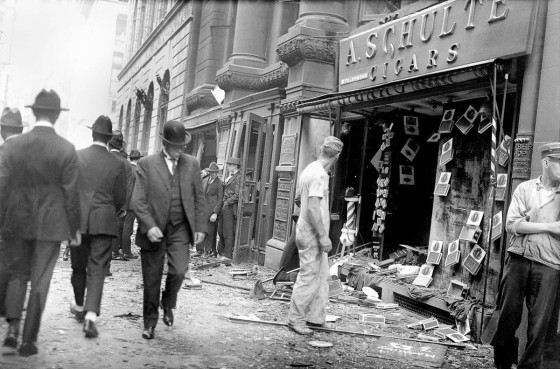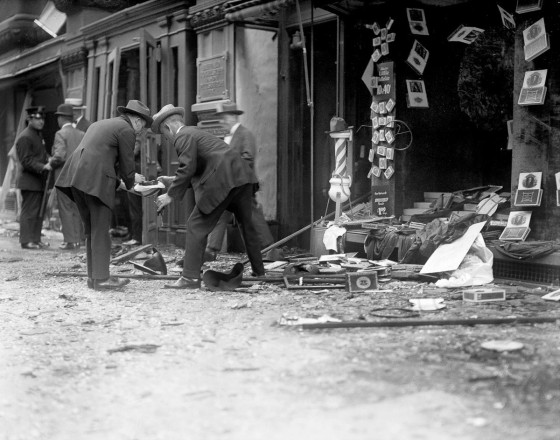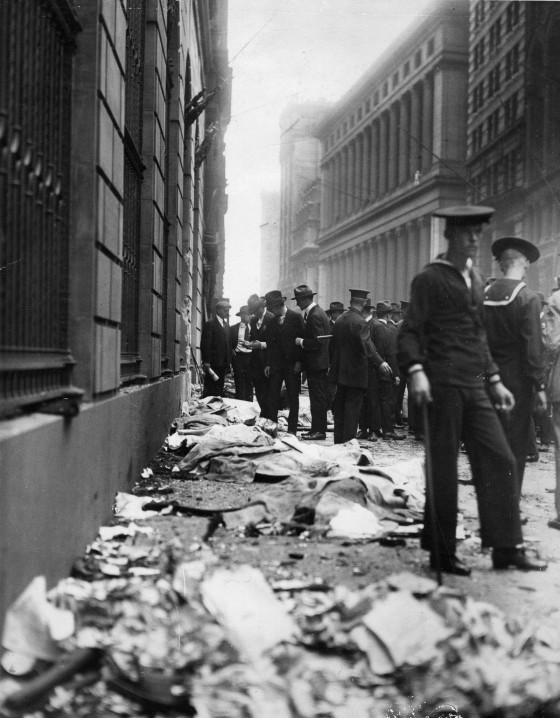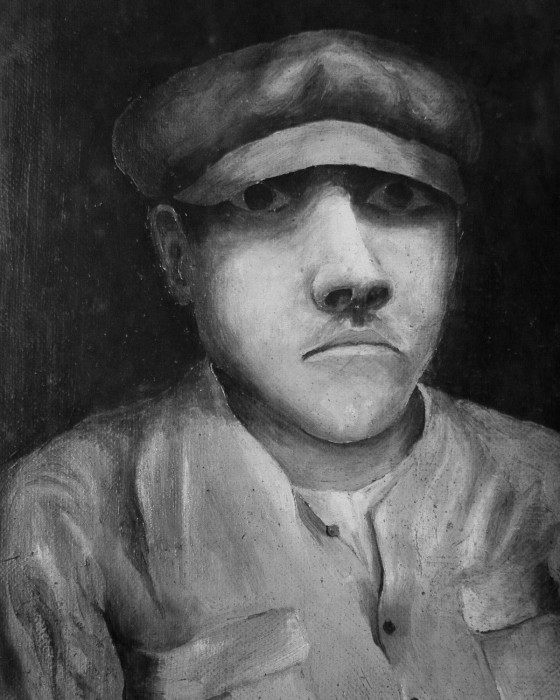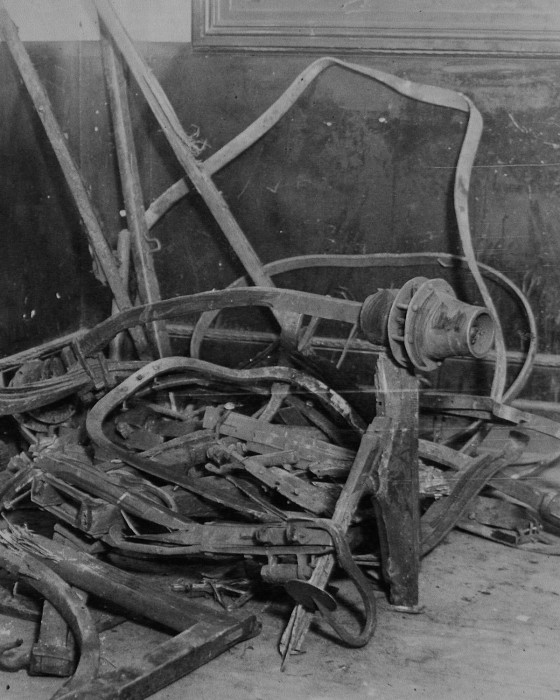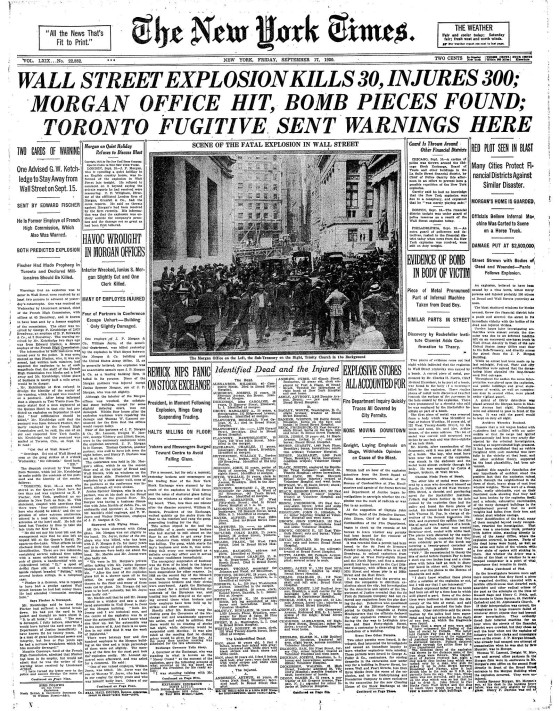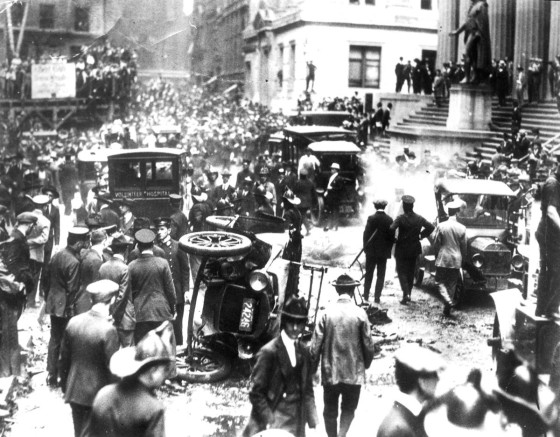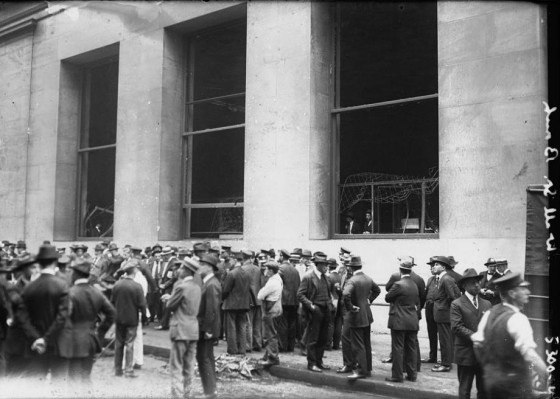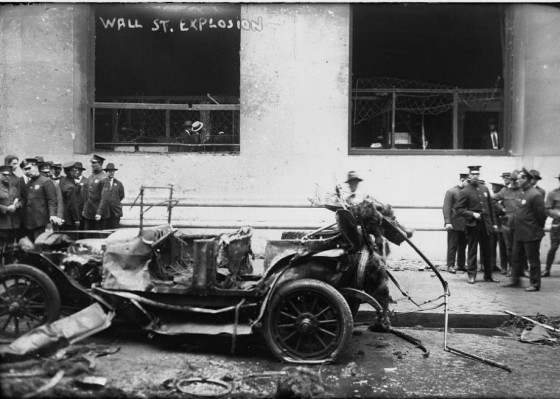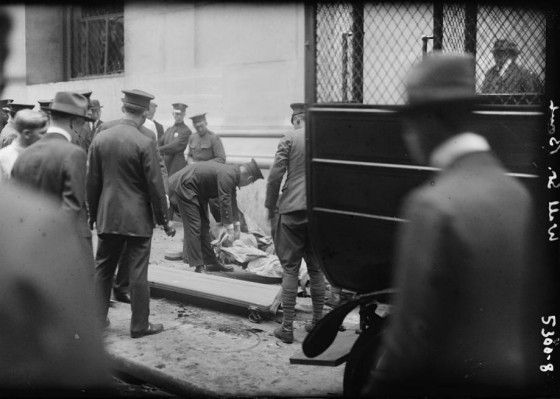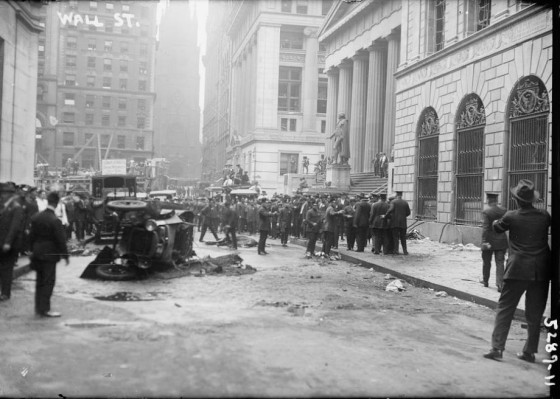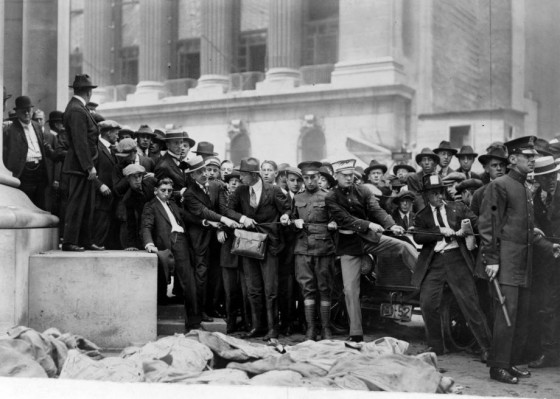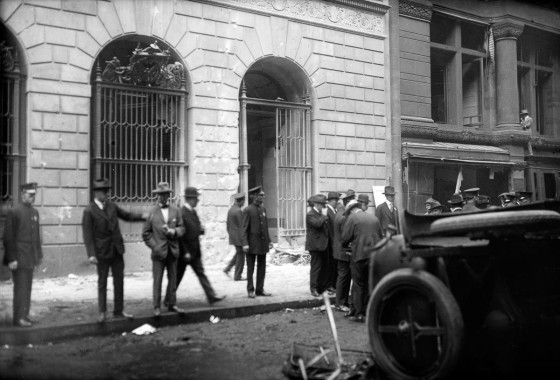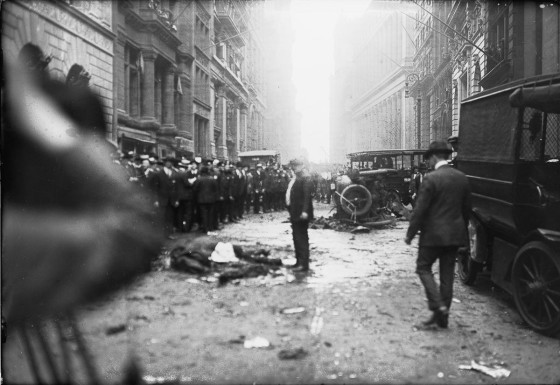The bombing was never solved, although investigators and historians believe it was carried out byGalleanists (Italian anarchists), a group responsible for a series of bombings the previous year. The attack was related topostwar social unrest, labour struggles, and anti-capitalist agitation in the United States.
The Wall Street bomb killed more people than the 1910 bombing of the Los Angeles Times, which was the deadliest act of terrorism on U.S. soil up to that point.
At noon, a horse-drawn wagon passed by lunchtime crowds on Wall Street and stopped across the street from the headquarters of the J.P. Morgan & Co. bank at 23 Wall Street, on the Financial District's busiest corner. Inside the wagon, 100pounds (45 kg) of dynamite with 500 pounds (230 kg) of heavy, cast-iron sash weights exploded in a timer-set detonation, sending the weights tearing through the air. The horse and wagon were blasted into small fragments, but the driver was believed to haveleft the vehicle and escaped.
The 40 fatalities were mostly young people who worked as messengers, stenographers, clerks, and brokers. Many of the wounded suffered severe injuries. The bomb caused more than US$2 million ($25.8 million today) in property damage and destroyedmost of the interior spaces of the Morgan building.
Within one minute of the explosion, William H. Remick, president of the New York Stock Exchange (NYSE), suspended tradingin order to prevent a panic. Outside, rescuers worked feverishly to transport the wounded to the hospital. James Saul, a 17-year-old messenger, commandeered a parked car and transported 30 injured people to an area hospital. Policeofficers rushed to the scene, performed first aid, and appropriated all nearby automobiles as emergency transport vehicles.
The Justice Department's Bureau of Investigation (BOI, the forerunner of the Federal Bureau of Investigation, or FBI) did not immediately conclude that the bomb was an act of terrorism. Investigators were puzzled by the number of innocentpeople killed and the lack of a specific target, other than buildings that suffered relatively superficial, non-structural damage. Exploring the possibility of an accident, police contacted businesses that sold and transported explosives. By 3:30 pm, the boardof governors of the NYSE had met and decided to open for business the next day. Crews cleaned up the area overnight to allow for normal business operations, but in doing so they destroyed physical evidence that might have helped police investigators solvethe crime. The Sons of the American Revolution had previously scheduled a patriotic rally for the day after (September 17) to celebrate Constitution Day atexactly the same intersection. On September 17, thousands of people attended the rally in defiance of the previous day's attack.
Officials eventually blamed anarchists and communists for the Wall Street bombing. The Washington Post called the attack an "act of war". The bombing stimulated renewed efforts by police and federal investigators to track the activitiesand movements of foreign radicals. Public demands to track down the perpetrators led to an expanded role for the BOI, including the bureau's General Intelligence Division headed by J. Edgar Hoover. The New York City Police Department (NYPD) also pushed toform a "special, or secret, police" to monitor "radical elements" in the city.
The perpetrator of the offence remains mere speculation.
Text sourced from Wikipedia.


